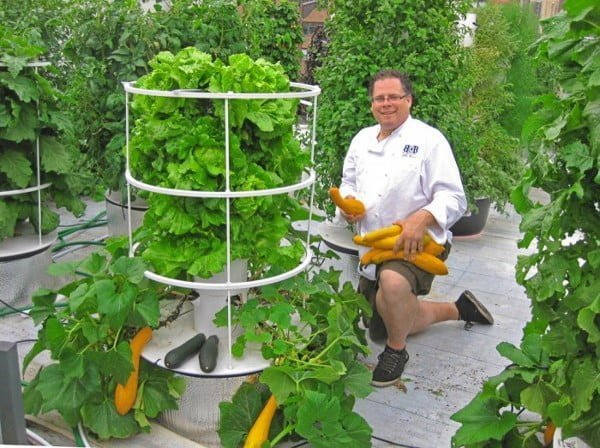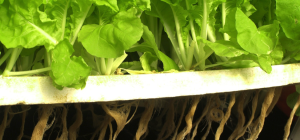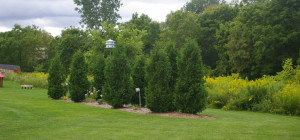Growing hydroponics can be a rewarding hobby for people living in the cities. It allows you to grow a variety of flowers and vegetables in the confined spaces of your flats with as little or as much involvement as you like. However, getting the most out of the process in terms of value, yield and satisfaction depends on the system you choose to run. Different systems suit different budgets and growing scale and have varied levels of maintenance.
Hydroponic systems generally fall into two categories: active and passive. An active hydroponic system actively moves the nutrient solution, usually using a pump. Passive hydroponic systems rely on the capillary action of the growing medium. The systems can also be further characterised as recovery or non-recovery. In the former method the water and nutrients are re-used, while in the latter they aren’t. Described below are the most commonly used systems and their advantages and disadvantages.
Passive Hydroponics/Pot Culture
As the name suggests, a passive hydroponic system has no moving parts with the roots absorbing the nutrients using capillary action. Capillary action is the tendency of a liquid to flow into narrow tubes and porous materials using surface tension. In its simplest form a passive hydroponic system can be achieved by placing a plant pot in a shallow solution of nutrients. The root can draw the nutrients through a porous and inert medium, such as clay pebbles, perlite or vermiculite. This is the most inexpensive method and requires little or no maintenance.
This system can be easily expanded by placing multiple pots in a grow tray over a reservoir of nutrient solution. The nutrients are drawn into the tray using wicks. This also allows sufficient oxygen to reach the roots. The downside of this system is that large plants can absorb the nutrients more quickly than the wicks are able to supply it.
Nutrient Film Technique
In the NFT system a thin film of nutrient solution is circulated over the roots of the plants. This is what gives the system its name. Typically, the plants are placed in a sloping irrigation channel, with the roots dangling from the pots. The nutrient solution is fed from the high end and runs past the bare roots. Also, an abundant supply of oxygen is provided to these roots with the aid of an air pump. NFT is a recovery system as the solution is collected in a reservoir and re-pumped into the channel. This reduces any water or nutrient waste. In addition, a healthy mix of oxygen, water and nutrients are provided to the plants increasing the yield and quality. Since no medium is required in this system any medium-related costs and maintenance can be avoided.
The biggest drawback of the system is that it can be quite unforgiving if the water circulation is cut off for reasons such as, pump or power failure. Since there is no medium to retain moisture the roots can dry out and die quite quickly. Also, care needs to be taken in setting up the channel slope and flow rate to ensure that no ponding occurs.
Ebb and Flow
Also known as Flood and Drain, this system is set up to provide both nutrients and oxygen to the plant at regular intervals. Plants are placed in a grow tray above a reservoir of nutrient solution. A pump is switched on (generally using a timer) which floods the tray above with water and nutrients. After the pump is turned off the water drains back into the reservoir through an overflow tube. The act of flooding pushes out stale, deoxygenated air, and when the water ebbs away the roots can access fresh air. This is a simple system to set up and can be inexpensive, at least to begin with. A medium like lava rock, which allows quick draining but also retains sufficient moisture, can be used to avoid root rot, while keeping the feeds to a minimum. Also, since fresh air is available to the roots with every drain cycle, the need for an air pump can be eliminated.
Since it’s a recovery system, the biggest downside is the fluctuation in the pH of the nutrient solution. It is important to check the pH frequently to ensure that it’s not too high or too low.
Drip Feed
Drip Feed system is set up very similarly to Ebb and Flow, except the water is pumped into the plants through individual drip lines. Each drip line can be adjusted according to its respective plant. This can be built as either a recovery or non-recovery system. Each has its advantages and disadvantages. With a recovery system although you can re-use the water and nutrients, the level of nutrients can diminish significantly with each cycle. Also, similar to Ebb and Flow, the pH may fluctuate. These problems can be avoided in a non-recovery system, but then you face the extra cost of supplying fresh nutrient solution when it runs out. The most commonly used medium in a Drip Feed system is rock wool.
Aeroponics
Extensively researched by NASA, Aeroponics uses the nutrient solution in a mist form. Similar to NFT, no medium is required in this system. The roots are suspended in air over a nutrient solution. A mister placed in the solution periodically sprinkles the roots with a fine mist of the solution. This system uses very little nutrients and water, while providing the plant with a healthy balance of both plus oxygen.
Buying or Building
One of the dilemmas faced by every hydroponics beginner is whether to buy a system or build it. It is generally advised, to people who are growing hydroponics as a hobby or just want to try it out, to buy a system first. These are readily available from any hydroponic store. This introduces you to the process more gently and allows you to get used to the maintenance and running of the system. Eventually, if you feel inclined, you can build your own system which may be even more efficient. You could also use the parts from the system you had bought, saving expenses.









can you share the exact system the guy kneeling in the photo with the squash is doing? can the system be bought?
thanks
Can the aeroponics system work outdoors like a rooftop or is it better in a greenhouse environment?